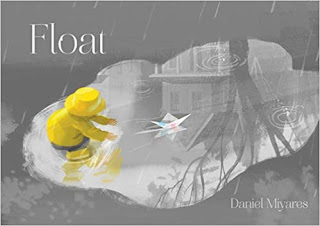 I love this time of year! I especially like getting out all my favorite Christmas books, putting them in a big pile and reading them one after the other.
I love this time of year! I especially like getting out all my favorite Christmas books, putting them in a big pile and reading them one after the other.I always liked opening presents and couldn't wait until Christmas Eve to open gifts at my grandma's house, or worse, Christmas morning when we could open gifts under the tree.
As an adult, I found a solution. Now, I can open a present everyday! I wrap up each and every one of my Christmas books that I've collected, enough to open one each day after Thanksgiving until Christmas day, making an "advent calendar" of sorts.
Each year, I look to add one new book to my collection and either retire an old one, or change it out for the year to refresh the selections.
Some are tried and true and I will never "retire" them. Below you will find the list of some of my all time favorite reads, along with some new ones to cherish with loved ones as you sip hot chocolate and gaze out the window at falling snow.
 Patricia Polacco is a prolific author of children's books. She has written several with themes of Christmas. Some favorites include, The Trees of the Dancing Goat, An Orange for Frankie, and the Christmas Tapestry. In the Tree of the Dancing Goats, there is an outbreak of sickness and one family brings Christmas joy to another in the form of small carved wooden animals. Even though the family does not celebrate Christmas, they know of the Christmas tradition of bringing a tree inside the house and surprise their neighbors with a meal and decorations. Very inspiring.
Patricia Polacco is a prolific author of children's books. She has written several with themes of Christmas. Some favorites include, The Trees of the Dancing Goat, An Orange for Frankie, and the Christmas Tapestry. In the Tree of the Dancing Goats, there is an outbreak of sickness and one family brings Christmas joy to another in the form of small carved wooden animals. Even though the family does not celebrate Christmas, they know of the Christmas tradition of bringing a tree inside the house and surprise their neighbors with a meal and decorations. Very inspiring.
The Jolly Christmas Postman has been a favorite for many years. Filled with storybook characters who write letters to each other and are delivered by the jolly postman as he sips tea at each stop as he narrates the story. Complete with real letters and envelopes to pull out and read as you move through the story, your kids will love to open all the flaps and discover all the "presents" on each page.

I can not express the feeling I get from reading this beautifully illustrated Appalachian tale. Filled with goodness and warmth, this story captures all the nostalgia of a home Christmas.

Another story from Patricia Polacco that deserves it's own attention. This story is based on the year after the author's real grandma has passed away and the family hires a housekeeper to keep things in order. As the family grieves the housekeeper, keeps the family going and helps them through their first Christmas season without their Babushka. You will not BELIEVE the ending.
Red and Lulu is an imagined tale of how a couple of cardinals, who's home tree was cut down to be used as the Rockefeller Center Christmas Tree lose and then find each other. After the season, the birds find a new home among the trees in Central Park. Beautifully illustrated by Matt Tavares.

Kate Dicamillo usually writes chapter books, but this book, Great Joy is one that needed to be told with full color illustrations. A small girl notices a homeless man out her window and offers him kindness in a world that ignores or dismisses him. Beautifully illustrated by Bagram Ibatoulline.


Kate Dicamillo usually writes chapter books, but this book, Great Joy is one that needed to be told with full color illustrations. A small girl notices a homeless man out her window and offers him kindness in a world that ignores or dismisses him. Beautifully illustrated by Bagram Ibatoulline.

New from Matt Tavares (author of Red and Lulu) comes the story of Dasher the reindeer. Dasher and her family live and work for a traveling circus. Dasher always feels like something is missing. When she has the opportunity to escape, she works her way to the North Pole, where she meets Santa Clause. Read to find out how Dasher comes to be part of Santa's team of reindeer.
Book Advent Calendar Photo cred: https://www.bookbub.com/blog/gift-wrap-books-for-christmas-ideas

































